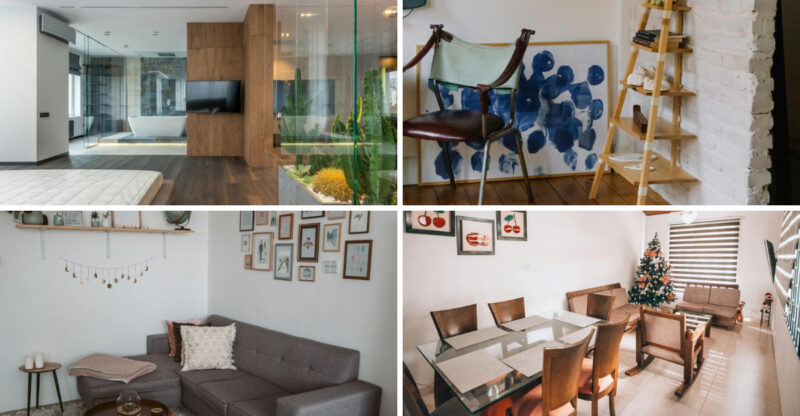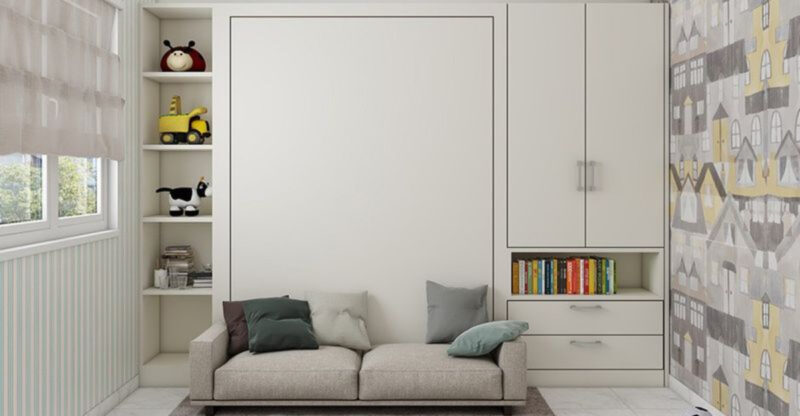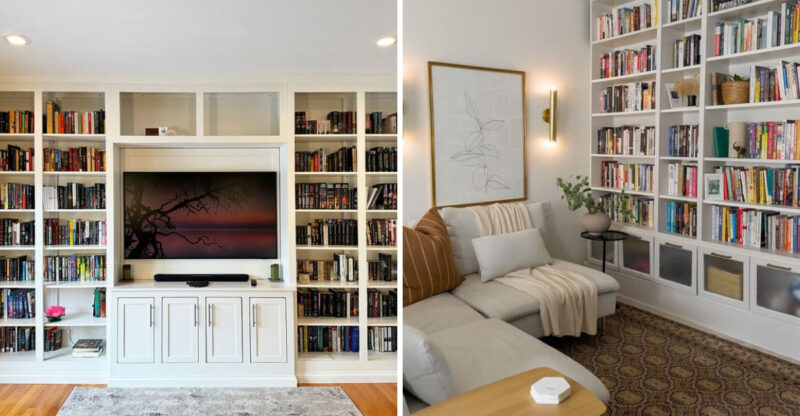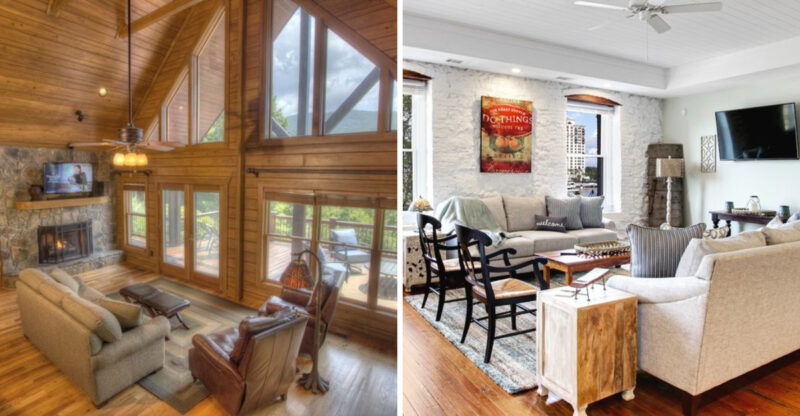Maximize Your Space 13 Stylish Designs For Small Living Rooms
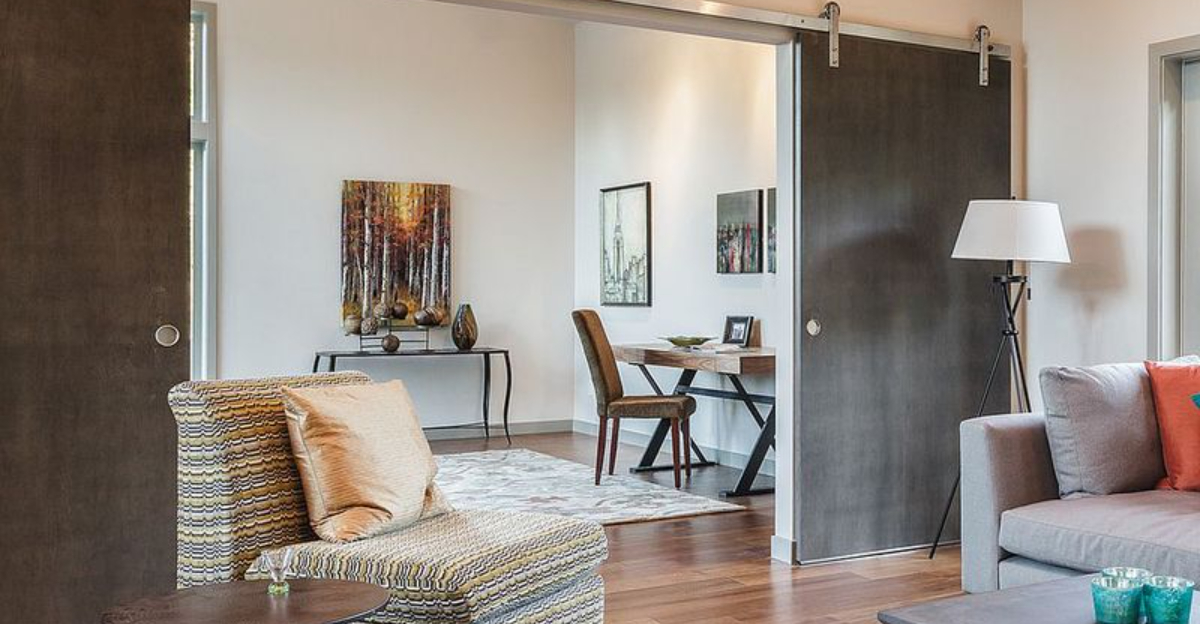
Living in a cozy space doesn’t mean sacrificing style or comfort. Small living rooms can actually become the most charming and functional areas in your home with the right design choices.
I’ve gathered 13 clever design ideas that will help you make the most of your compact living area while keeping it stylish and inviting.
These solutions combine form and function to transform your limited square footage into a space that feels open, organized, and perfectly you.
1. Wall-Mounted Shelving Units
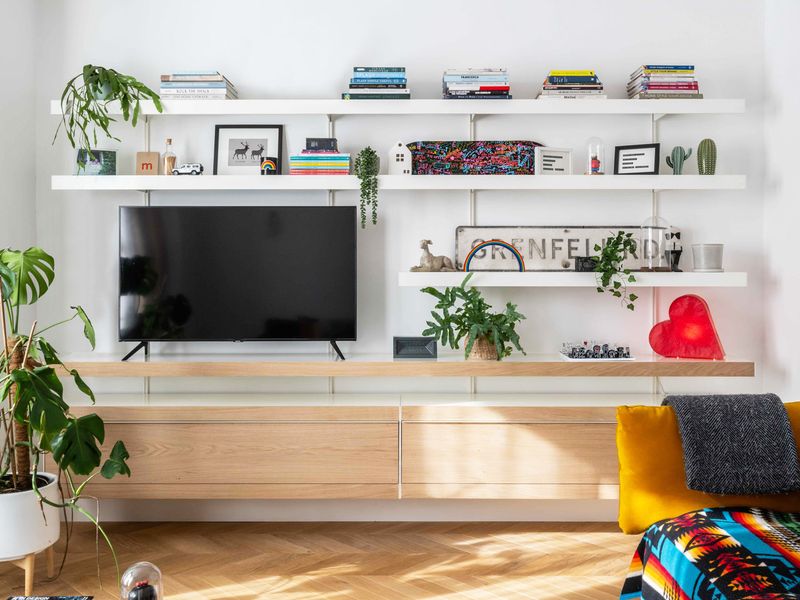
Floating shelves are game-changers for small spaces! By moving storage up the walls, you free up valuable floor space while creating visual interest. I installed three staggered shelves in my tiny apartment and instantly gained room for books, plants, and decorative items.
The beauty of wall-mounted shelving is its versatility. Choose slim, minimalist brackets for a contemporary look or chunky industrial-style supports for rustic charm. You can arrange them symmetrically for order or in creative configurations for artistic flair.
Consider painting your shelves the same color as your walls for a seamless look that makes the room feel larger, or choose contrasting colors to create focal points. Wood tones add warmth while metal or glass options feel airier.
2. Modular Sectional Sofas
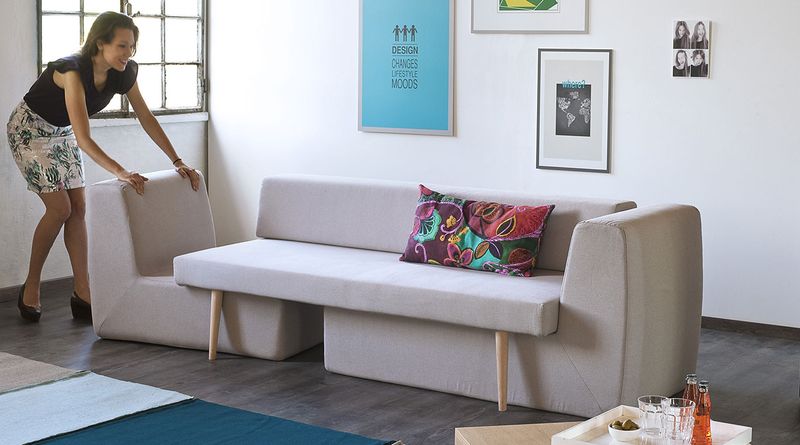
Modular sofas have revolutionized my approach to small living rooms. These versatile pieces can be rearranged to fit your space perfectly or accommodate different activities. When friends visit, I expand the configuration; when alone, I create a cozy reading nook.
Unlike traditional sofas, modular sections adapt to awkward room layouts and can be split up to serve multiple purposes. Many designs include hidden storage compartments beneath seats perfect for stashing extra blankets, magazines, or seasonal items.
Look for models with removable, washable covers in durable fabrics. Neutral colors make the room feel more spacious, while adding colorful throw pillows lets you refresh the look without replacing the entire piece. Did you know? Modular furniture first gained popularity in the 1940s!
3. Light-Colored Walls and Furniture
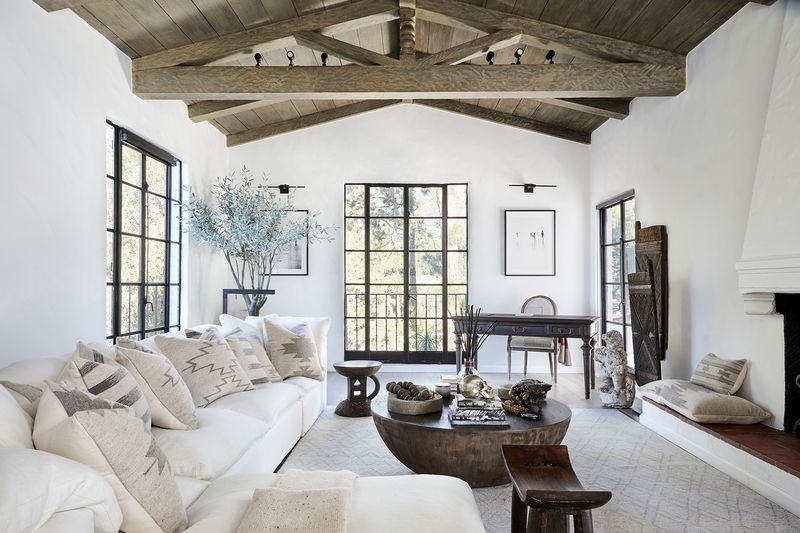
Bright walls create magic in small spaces! I painted my cramped living room soft white, and it instantly felt twice as big. Light colors reflect natural light rather than absorbing it, creating an airy, expansive feeling that darker shades simply can’t match.
When choosing furniture, consider cream, beige, or pastel upholstery to maintain this open feeling. My pale blue loveseat practically disappears against similarly toned walls, preventing the visual clutter that makes spaces feel confined.
If an all-white room feels too sterile, warm it up with natural textures like jute rugs, woven baskets, or wooden accent pieces. These elements add character without weighing down the space. For visual interest without sacrificing spaciousness, try tone-on-tone patterns or subtle textural variations.
4. Nesting Coffee Tables
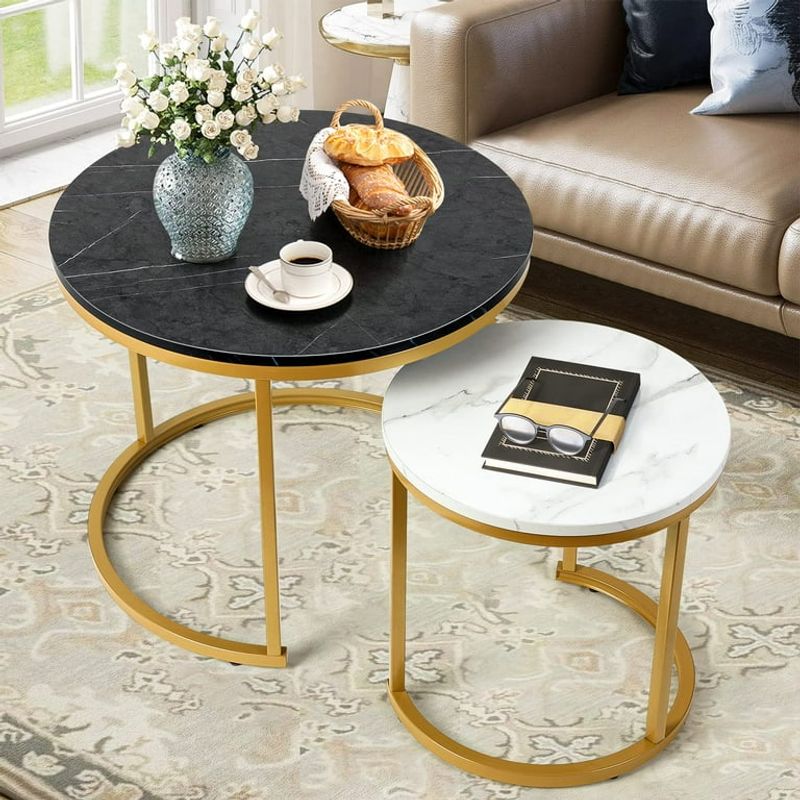
Nesting tables are my secret weapon for entertaining in small spaces! These clever sets include multiple tables of different sizes that tuck neatly together when not needed. When guests arrive, I simply pull them apart to create extra surface area for drinks and snacks.
The versatility extends beyond coffee tables nesting side tables work brilliantly beside sofas or as impromptu dining surfaces. Materials like glass or acrylic create a barely-there look that won’t overwhelm your space, while mixed material sets (think marble tops with metal frames) add visual interest.
During my last apartment makeover, I found vintage nesting tables that double as display surfaces for my favorite art books and plants. When choosing your set, consider how the smallest table might function independently perhaps as a plant stand or laptop table.
5. Built-In Storage Benches
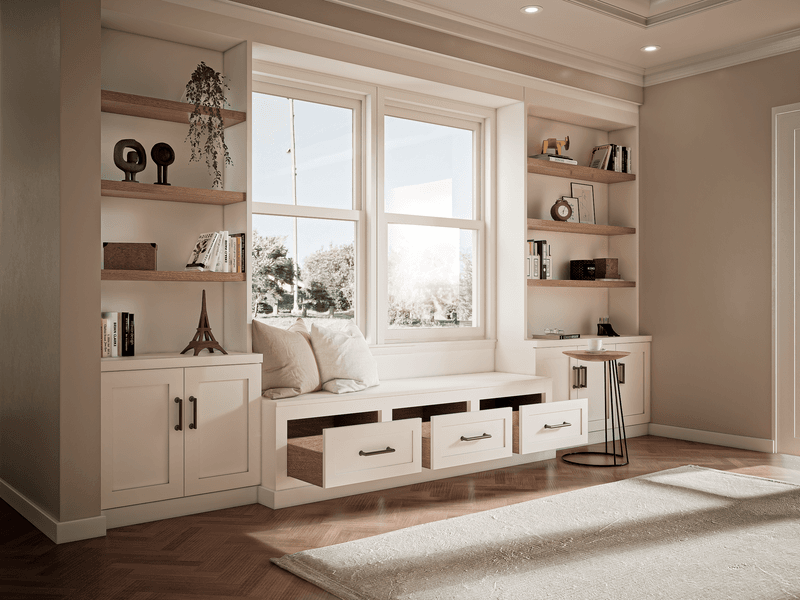
Storage benches changed my small living room game forever! Tucked under windows or along walls, these dual-purpose pieces provide both seating and hidden storage. My window bench swallows up seasonal decorations, extra throws, and board games that would otherwise clutter my limited space.
The flat top surface doubles as display space for plants or decorative items when not being used for seating. For maximum comfort, add cushions that match your existing decor. Some homeowners take this concept further by installing custom built-ins that extend wall-to-wall.
If you’re renting or prefer flexibility, freestanding storage benches offer similar benefits without permanent installation. Look for designs with lids that open smoothly and stay open while you access items. Safety tip: choose models with ventilation holes if storing textiles to prevent mustiness.
6. Floating TV Consoles
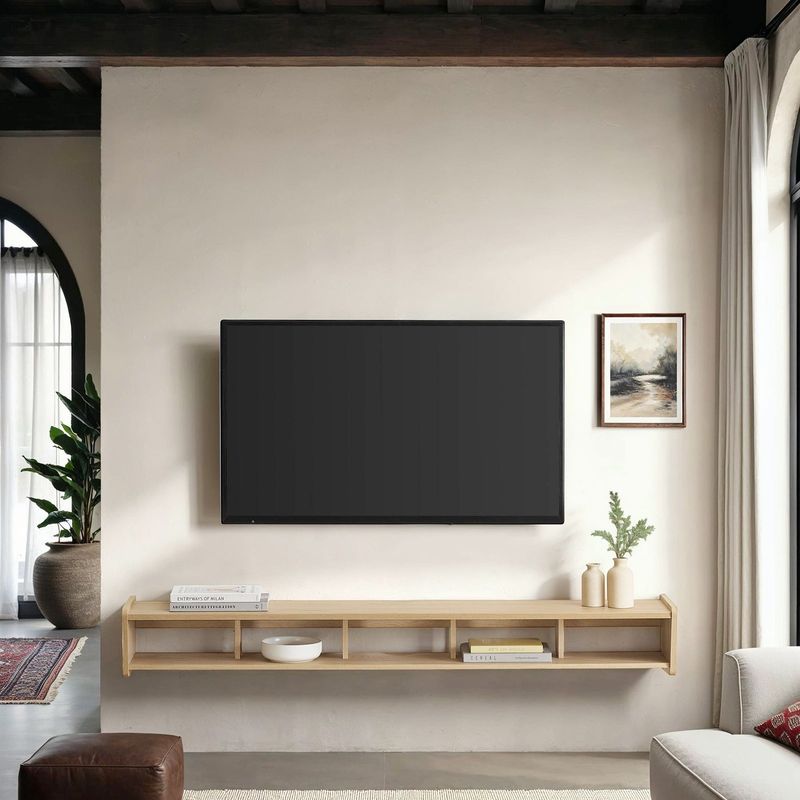
Wall-mounted TV consoles freed up so much floor space in my apartment! Unlike traditional entertainment centers that dominate the room, floating consoles create a clean, contemporary look while maximizing every square inch. The open area underneath makes my living room feel significantly larger.
These sleek units typically feature cable management systems to hide unsightly cords and connections. Many models include drawers or cabinets for storing media equipment, game controllers, and other essentials. The floating design also makes cleaning a breeze no more struggling to vacuum under bulky furniture!
When selecting a floating console, ensure your wall construction can support both the unit and your television. Studs or solid masonry provide the necessary strength. For rental properties, some manufacturers offer models that attach to TV mounts rather than directly to walls, providing similar benefits without permanent installation.
7. Mirrored Accent Walls
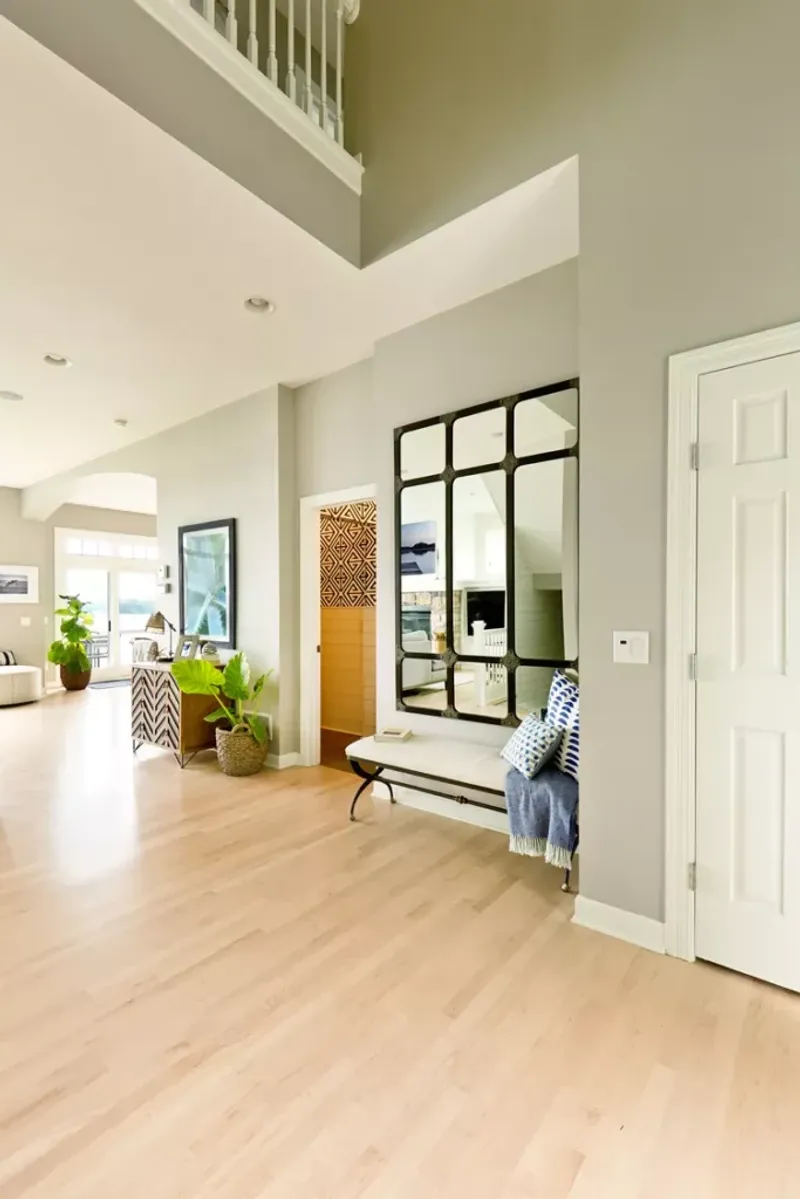
Mirrors work like visual magic in compact spaces! My tiny living room doubled in perceived size after I installed a mirrored accent wall. This design trick reflects natural light and views, creating an illusion of depth that transforms cramped quarters into something that feels expansive and bright.
If a full mirrored wall seems overwhelming, consider alternatives like antiqued mirror tiles or a gallery of framed mirrors in various shapes. These options provide similar benefits while adding texture and personality. Strategic placement matters too positioning mirrors to reflect windows maximizes natural light.
When I designed my friend’s apartment, we used mirror panels with thin brass dividers for a sophisticated art deco vibe. The effect was stunning! Beyond aesthetic benefits, mirrored surfaces can also camouflage architectural oddities or balance asymmetrical rooms. Just be mindful of what the mirrors will reflect – ideally something attractive rather than clutter.
8. Slim Profile Armchairs
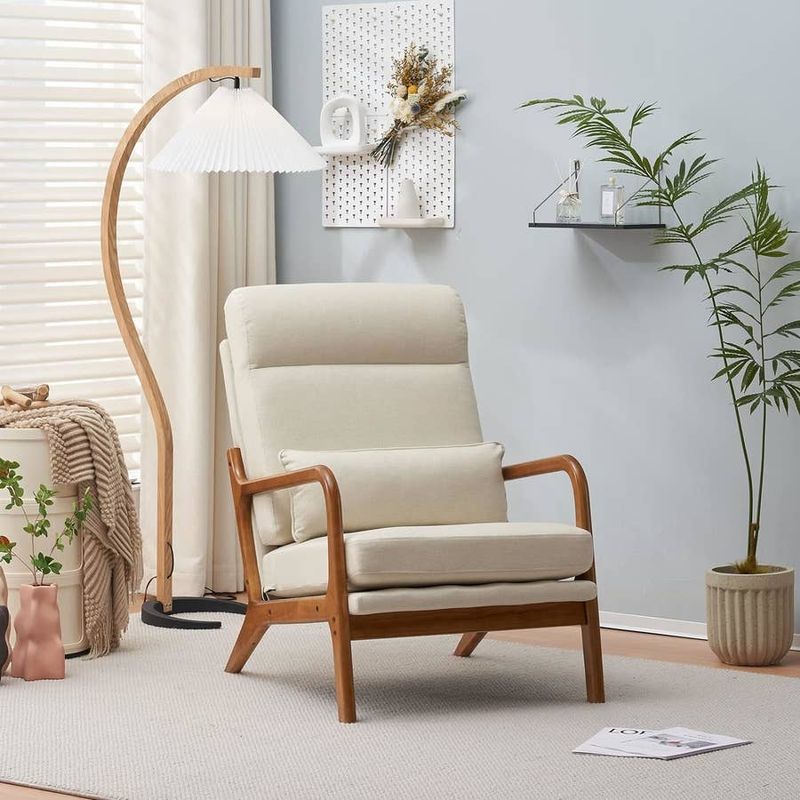
Slender armchairs revolutionized my approach to small-space seating! Unlike bulky traditional chairs, these streamlined beauties provide comfortable seating without dominating the room. The key is in their proportions think visible legs, narrow arms, and tailored cushions that eliminate visual weight.
When shopping for my studio apartment, I discovered chairs with arms that tuck neatly under side tables, allowing for perfect positioning in tight corners. Upholstery choices matter too – textured fabrics add interest while maintaining a sleek silhouette. For ultimate space efficiency, consider slipper chairs, which eliminate arms altogether.
These space-conscious designs don’t sacrifice comfort for style. My mid-century inspired chair features a perfectly angled back that supports proper posture during long reading sessions. Fun fact: slim profile furniture gained popularity during post-war housing shortages when designers needed to accommodate more people in smaller homes!
9. Multi-Functional Ottomans
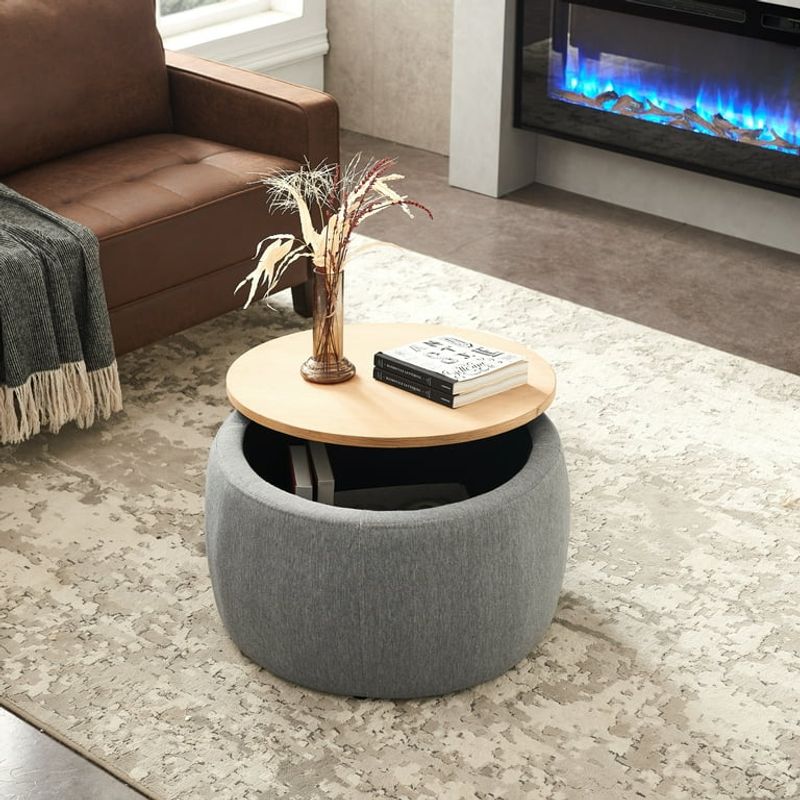
Ottomans with hidden talents saved my small living room! These versatile pieces serve as footrests, extra seating, coffee tables, and storage units all in one compact package. I found a hollow ottoman that swallows up throw blankets, magazines, and remote controls that would otherwise clutter my limited space.
The flat top surface becomes an instant coffee table when topped with a decorative tray. When friends visit unexpectedly, these sturdy pieces provide comfortable additional seating. Some designs even unfold into guest beds for overnight visitors talk about space efficiency!
If you’re decorating from scratch, consider ottomans instead of a traditional coffee table altogether. Round or oval shapes allow for easier movement in tight spaces, while casters add mobility. Look for durable, stain-resistant fabrics if your ottoman will regularly transition between different functions.
10. Vertical Art Displays
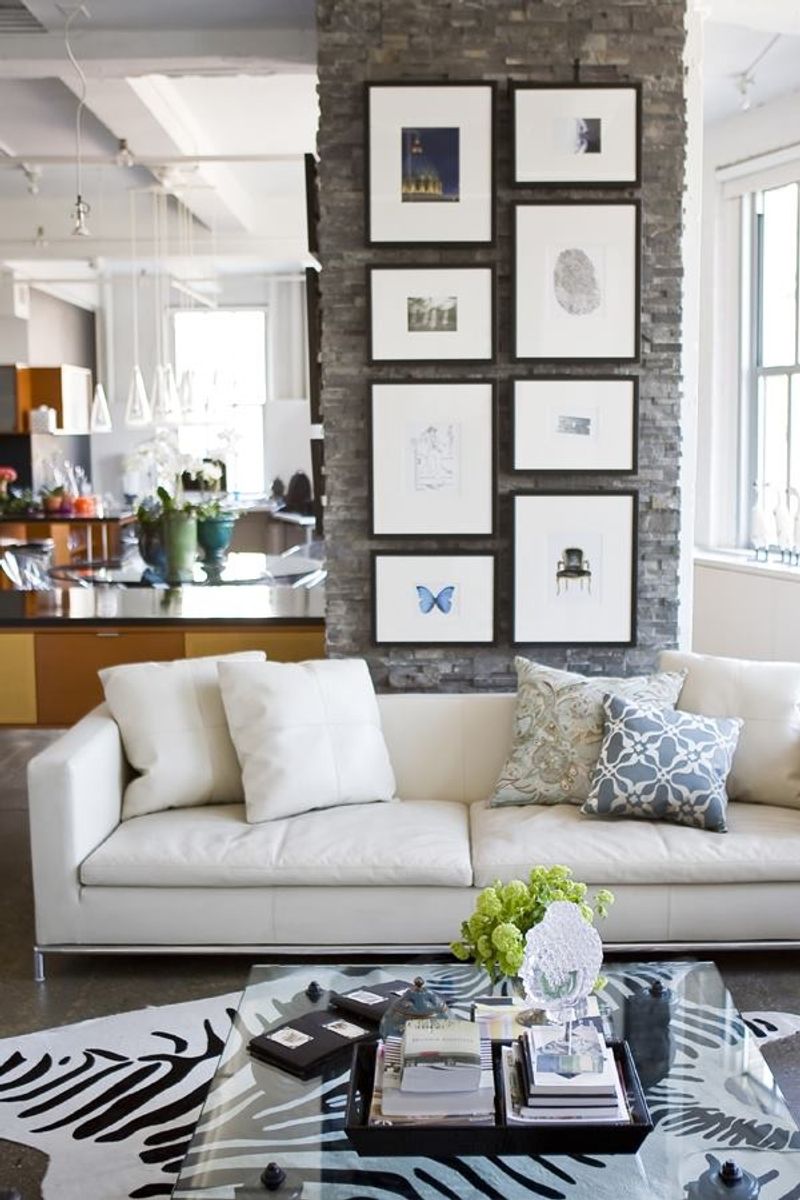
Drawing the eye upward completely transformed my compact living area! By arranging artwork in vertical configurations, I created the illusion of higher ceilings while making a dramatic design statement. This approach works with any style from formal gallery arrangements to eclectic collections.
Stacking similar-sized frames creates a cohesive column effect that elongates walls. For more visual interest, I mix frame sizes but maintain consistent spacing between pieces. The vertical orientation naturally guides visitors’ gaze upward, making them less aware of limited floor space.
When selecting art for vertical displays, consider pieces with upward movement or tall subjects. My collection includes botanical prints of tall grasses and architectural photographs shot from below. The frames matter too thin profiles take up less visual space than chunky borders. For maximum impact without overwhelming small rooms, try a single oversized vertical piece as a focal point.
11. Sliding Doors Instead of Swing Doors
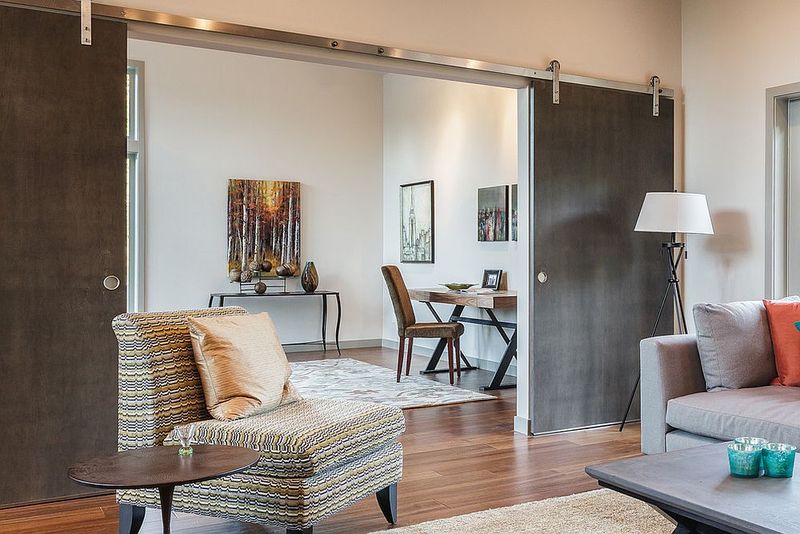
Replacing traditional doors with sliding alternatives reclaimed precious square footage in my compact living area! Standard swing doors require clearance space that often limits furniture placement options. My sliding barn door eliminated this dead zone, allowing me to position my reading chair exactly where I wanted it.
Beyond the practical space-saving benefits, sliding doors add architectural interest and can serve as design features. Glass pocket doors between my living room and kitchen maintain separation while allowing light to flow freely between spaces. For privacy without sacrificing style, frosted or textured glass options work beautifully.
If structural changes aren’t possible, consider sliding curtain panels as room dividers. These soft separators can be pulled closed when needed and stacked neatly against walls when open. The hardware matters too quality tracks ensure smooth, quiet operation that feels luxurious rather than makeshift.
12. Glass or Acrylic Furniture Pieces
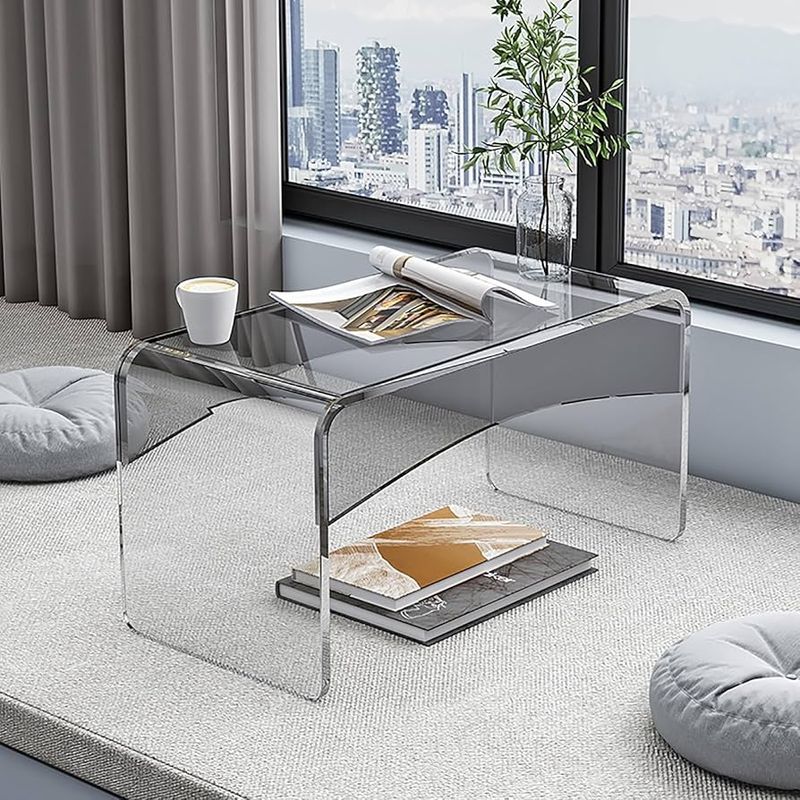
Transparent furniture created breathing room in my snug living area! Glass tables and acrylic chairs allow light to pass through, reducing visual clutter and making the space feel more open. My glass coffee table practically disappears, giving the illusion of more floor space while still providing functionality.
These see-through pieces work particularly well in rooms with limited natural light. Unlike solid wooden furniture that absorbs brightness, transparent materials reflect and amplify available light. Acrylic chair legs seem to float, creating an airy feeling that solid furniture simply can’t match.
When selecting glass pieces, I recommend rounded edges for safety in tight spaces. For acrylic, look for high-quality, thick materials that resist scratching and yellowing over time. These transparent elements pair beautifully with both modern and traditional decor styles. Mixing clear pieces with solid furniture creates a balanced look that prevents the room from feeling either too heavy or too insubstantial.
13. Minimalist Window Treatments
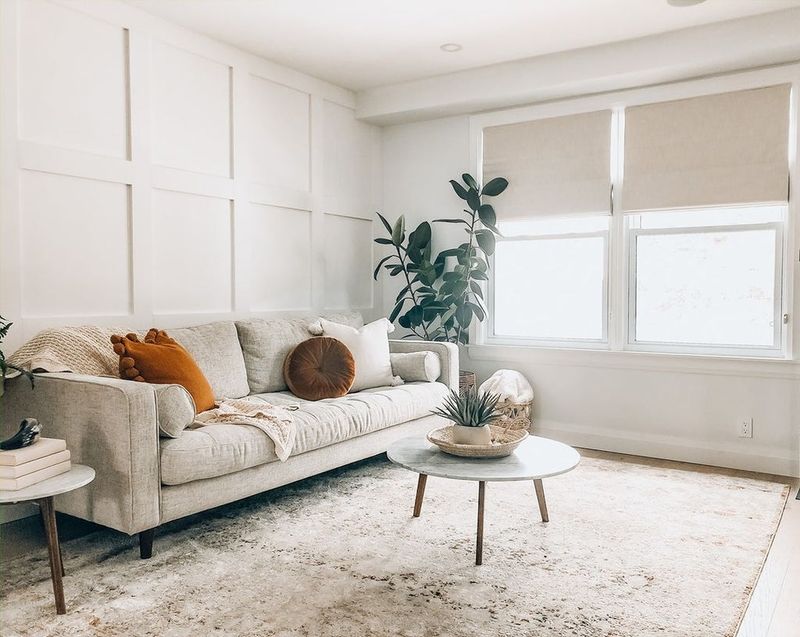
Simple window coverings dramatically opened up my tiny living space! Heavy drapes and ornate valances may work in spacious rooms, but they overwhelm small areas and block precious natural light. Switching to streamlined roller shades allowed my windows to feel larger while maximizing daylight.
Mounting treatments outside the window frame creates an illusion of larger windows and higher ceilings. For my south-facing window, I chose light-filtering fabric that provides privacy without sacrificing brightness. When completely raised, these minimal coverings practically disappear, unlike bulky curtains that still take up visual space.
If you prefer soft treatments, consider unlined linen panels hung just below the ceiling and extending slightly beyond window frames. This elongates the window visually while maintaining a light aesthetic. The hardware matters too slim rods in finishes that match your existing fixtures create a cohesive, uncluttered look that’s perfect for compact spaces.

